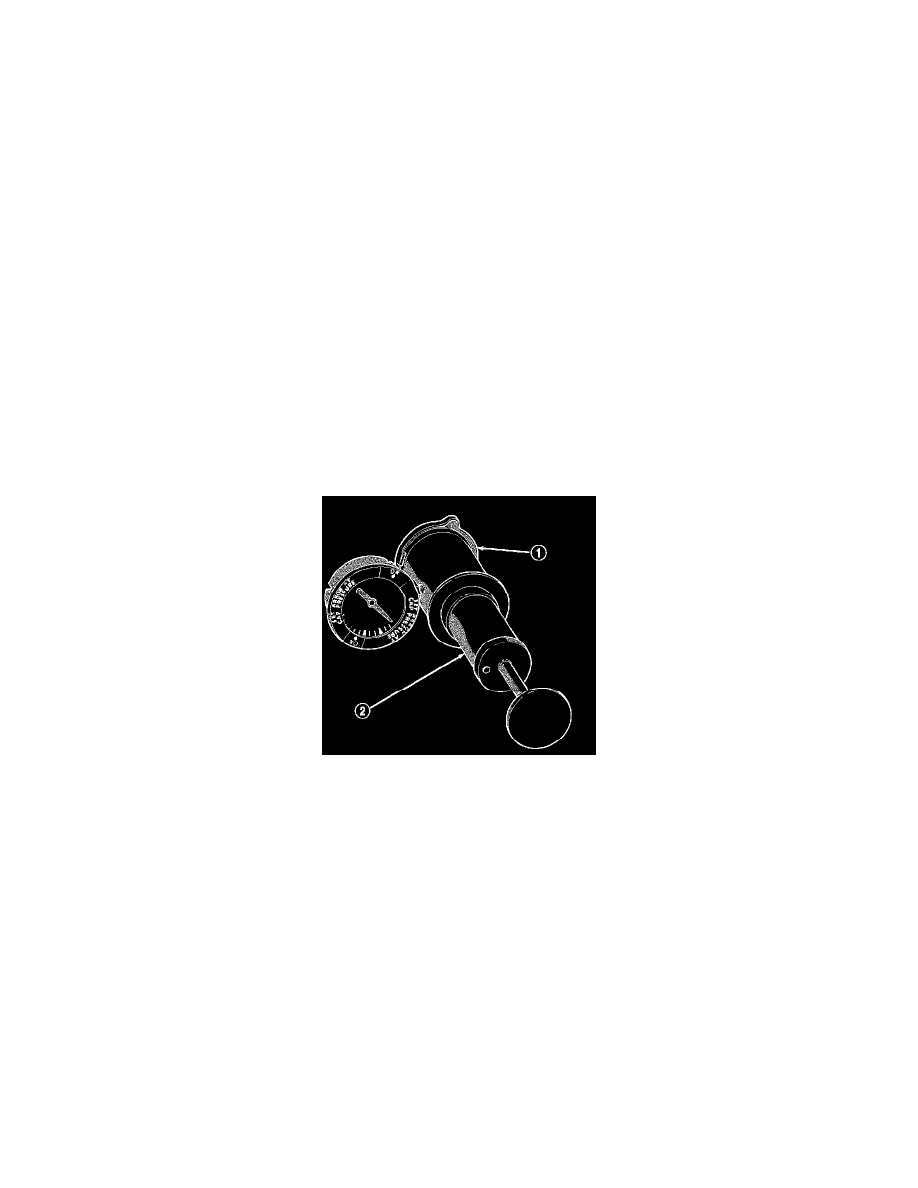Raider V6-3.7L SOHC (2006)

Radiator Cap: Testing and Inspection
RADIATOR CAP-TO-FILLER NECK SEAL
The pressure cap upper gasket (seal) pressure relief can be tested by removing overflow hose from radiator filler neck nipple. Attach hose of pressure
tester tool 7700 (or equivalent) to nipple. It will be necessary to disconnect hose from its adapter for filler neck. Pump air into radiator. The pressure
cap upper gasket should relieve at 131 kPa (21 psi) and hold pressure at a minimum of 130 kPa (18.8 psi).
WARNING: THE WARNING WORDS "DO NOT OPEN HOT" ON RADIATOR PRESSURE CAP, ARE A SAFETY PRECAUTION.
WHEN HOT, PRESSURE BUILDS UP IN COOLING SYSTEM. TO PREVENT SCALDING OR INJURY, RADIATOR CAP SHOULD
NOT BE REMOVED WHILE SYSTEM IS HOT AND/OR UNDER PRESSURE.
Do not remove radiator cap at any time except for the following purposes:
1. Check and adjust antifreeze freeze point.
2. Refill system with new antifreeze.
3. Conducting service procedures.
4. Checking for vacuum leaks.
WARNING: IF VEHICLE HAS BEEN RUN RECENTLY, WAIT AT LEAST 15 MINUTES BEFORE REMOVING RADIATOR CAP.
WITH A RAG, SQUEEZE RADIATOR UPPER HOSE TO CHECK IF SYSTEM IS UNDER PRESSURE. PLACE A RAG OVER CAP
AND WITHOUT PUSHING CAP DOWN, ROTATE IT COUNTER-CLOCKWISE TO FIRST STOP. ALLOW FLUID TO ESCAPE
THROUGH THE COOLANT RESERVE/OVERFLOW HOSE INTO RESERVE/OVERFLOW TANK. SQUEEZE RADIATOR UPPER
HOSE TO DETERMINE WHEN PRESSURE HAS BEEN RELEASED. WHEN COOLANT AND STEAM STOP BEING PUSHED
INTO TANK AND SYSTEM PRESSURE DROPS, REMOVE RADIATOR CAP COMPLETELY
RADIATOR CAP
Remove cap (1) from radiator. Be sure that sealing surfaces are clean. Moisten rubber gasket with water and install cap (1) on pressure tester 7700 (2)
or an equivalent. Operate tester pump to bring pressure to 138 kPa (20 psi) on gauge. If pressure cap (1) fails to hold pressure of at least 131 kPa (19
psi) replace cap. The pressure cap may test properly while positioned on tool 7700 (or equivalent). It may not hold pressure or vacuum when installed
on radiator. If so, inspect radiator filler neck and cap's top gasket for damage. Also inspect for dirt or distortion that may prevent cap from sealing
properly.
CAUTION: Radiator pressure testing tools are very sensitive to small air leaks, which will not cause cooling system problems. A pressure cap that
does not have a history of coolant loss should not be replaced just because it leaks slowly when tested with this tool. Add water to tool. Turn tool
upside down and recheck pressure cap to confirm that cap needs replacement.
INSPECTION
Hold cap at eye level, right side up. The vent valve at bottom of cap should open. If rubber gasket has swollen and prevents vent valve from opening,
replace cap.
Hold cap at eye level, upside down. If any light can be seen between vent valve and rubber gasket, replace cap. Do not use a replacement cap that has
a spring to hold vent shut. A replacement cap must be the type designed for a coolant reserve/ overflow system with a completely sealed diaphragm
spring and a rubber gasket. This gasket is used to seal to radiator filler neck top surface. Use of proper cap will allow coolant return to radiator.
